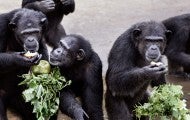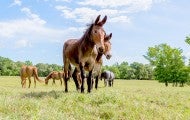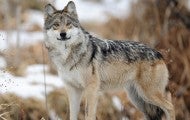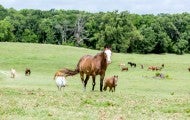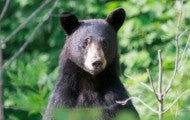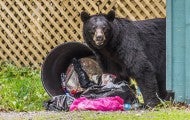BALTIMORE, Maryland—On Tuesday, a Maryland federal judge ruled that the National Institutes of Health cannot lawfully refuse to retire federally owned chimpanzees formerly used for research to Chimp Haven, the federal chimpanzee sanctuary. The decision was issued in a lawsuit brought by the Humane...
Longtime Trust friend Fred Ziegler became the first founding member of the Humane Stewardship Alliance, pledging to follow humane stewardship principles in managing his nearly 2900 acres in Tennessee. With three streams and 1.5 miles of frontage along one of North America’s most biologically rich...
My husband and I were contemplating whether to hike the 3-mile trail in Utah’s Zion National Park that September day. I’d read that this trail was our best chance to spot bighorn sheep, but after a week of exploring the five national parks in the state, our bodies were tired—and it was already late...
Teddy was never meant to have a name. He was born a number, just one of tens of thousands of dogs—mostly beagles like him, chosen for their trusting, docile nature and compact size—bred in the United States for use in experiments each year. Teddy was meant to live and die in a laboratory, without...
Today, the New York state legislature passed a bill that ends inhumane wildlife killing contests, in which participants compete to kill the most, the heaviest and the smallest animals for cash and prizes. In 2018 and 2020, the Humane Society of the United States released undercover investigations...
WASHINGTON—Last week, the U.S. Court of Appeals for the Fourth Circuit dismissed the National Institutes of Health’s appeal of a federal court ruling that the agency broke the law by withholding sanctuary retirement from federally owned chimpanzees formerly used in research. The appeal was dismissed...
Updated Jan.11, 2022 As a leader in the successful fight to end the use of chimpanzees in research, we have for years been the biggest supporter and donor to Project Chimps, a Georgia sanctuary that cares for chimpanzees retired from New Iberia Research Center. The sanctuary has always planned to...
One of the Humane Stewardship Alliance’s newest members is the 264-acre Taft Gardens & Nature Preserve in Ojai, California. A bit northwest of LA and Lake Casitas, Ojai is nestled in the foothills of the beautiful Topatopa Mountains. This hidden gem includes both exotic gardens and extensive natural...
When a snake bit Lolo, one of 62 chimpanzees Humane Society International cares for in Liberia, sanctuary director and veterinarian Richard Ssuna gave him antibiotics and pain medicine hidden in rice balls. Lolo lives on one of six mangrove islands where animals were retired from research starting...
In a quiet corner of Black Beauty Ranch, on a stone plinth beneath a maple tree, there’s an oval etching of a man and a burro. The man is Cleveland Amory, author and founder of the Fund for Animals, and the burro is Friendly, one of the first animals to call the sanctuary home. The two met in 1980...
As black bear numbers increase in some North American communities and more people move into bear habitat, encounters between bears and people have risen. Whether you live in bear country or are just visiting, you can take simple steps to avoid conflicts. Learn More About Bears (Please note that this...
It started in 2002: The bears around Durango, Colorado, came down from the hills to feast on the city’s garbage. Normally, natural food—nuts and berries and acorns—keeps them in the woods, but a series of droughts and late freezes in 2002, 2007, 2012 and 2017 left them hungry. Despite their fear of...

